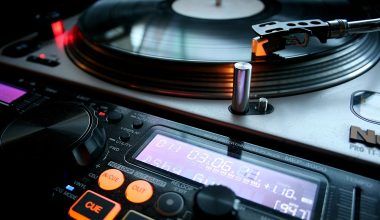Have you ever wondered when a piece of music enters the public domain? This is a common question, especially for creators, businesses, and music lovers who want to use music without worrying about copyright restrictions. Knowing when music becomes public domain can open up a world of creative opportunities. In this blog, we’ll break it down step by step so you can understand how it works without any confusion.
What Does Public Domain Mean?
Before diving into the timeline of music entering the public domain, let’s first understand what “public domain” means. In simple terms, public domain refers to creative works that are no longer protected by copyright. This means anyone can use them without permission or paying royalties. These works are essentially free for public use, whether it’s a song, a book, or a painting.
However, it’s important to note that just because a song is “old” doesn’t necessarily mean it’s in the public domain. Different rules and timelines apply depending on where you live and when the music was created.
Why Does Copyright Exist?
To understand when music becomes public domain, it’s helpful to know why copyright exists in the first place. Copyright laws are designed to protect the rights of creators by giving them exclusive control over their work for a certain period of time. This allows musicians, writers, and artists to earn money from their creations and prevents others from using their work without permission.
Once the copyright period expires, the work enters the public domain, allowing anyone to use it freely. This system strikes a balance between rewarding creativity and enriching culture by making works available to everyone over time.
How Long Does Copyright Last?
The length of copyright protection varies depending on the country and the time period when the work was created. Here are some general guidelines to help you understand how long copyright lasts:
United States
- For works created before 1978: Copyright lasts for 95 years from the date of publication.
- For works created on or after January 1, 1978: Copyright lasts for the life of the author plus 70 years.
- Anonymous or corporate works: Copyright lasts for 95 years from publication or 120 years from creation, whichever comes first.
European Union
- General rule: Copyright lasts for the life of the author plus 70 years.
- Special cases: Some countries have exceptions for unpublished works or different rules for certain types of music.
Other Countries
The duration of copyright varies worldwide, but many countries follow the life-plus-70-years rule. Always check the specific laws in your country if you’re unsure.
When Does Music Enter the Public Domain?
Music enters the public domain when its copyright protection expires. Let’s look at some specific scenarios to understand this better:
- Classical music: Works by composers like Mozart, Beethoven, and Bach are in the public domain because their copyrights expired long ago.
- 20th-century music: Songs published before 1923 in the United States are generally in the public domain.
- Recent music: Songs created more recently will take longer to enter the public domain due to extended copyright laws.
It’s worth noting that even if the music itself is in the public domain, recordings of that music might still be protected by copyright. For example, a modern orchestra’s performance of Beethoven’s Symphony No. 9 could still be under copyright, even though the composition is in the public domain.
How to Check If Music Is Public Domain
If you’re unsure whether a piece of music is in the public domain, here are some steps to help you find out:
- Research the publication date: Look for the date when the music was first published. If it was published before 1923 in the U.S., it’s likely in the public domain.
- Check copyright databases: Many countries have online databases where you can search for copyright information.
- Consult experts: If you’re still unsure, consider consulting a copyright lawyer or a music rights organization.
Why Does Public Domain Music Matter?
Public domain music plays a crucial role in our culture and creativity. Here are some reasons why it’s important:
- Creative freedom: Public domain music allows artists to create new works without legal or financial barriers.
- Educational use: Teachers and students can use public domain music freely for learning and teaching purposes.
- Cost savings: Businesses and filmmakers can use public domain music without paying licensing fees.
Common Misconceptions About Public Domain Music
There are many myths surrounding public domain music. Let’s clear up some of the most common ones:
- All old music is public domain: This is not true. The copyright duration depends on the publication date and other factors.
- Public domain means no restrictions: While you can use public domain music freely, you still need to respect trademarks and other rights.
- Internet availability means public domain: Just because you find music online doesn’t mean it’s public domain. Always verify the copyright status.
How to Use Public Domain Music
Using public domain music is easy once you’ve confirmed its status. Here are some ideas:
- Create remixes: Use public domain music as a base for your own creations.
- Film soundtracks: Add a classical touch to your movie or video project.
- Commercial projects: Use public domain music in advertisements or products without worrying about licensing fees.
Final Thoughts on Public Domain Music
Understanding when music becomes public domain can empower you to use it creatively and responsibly. Remember to always double-check the copyright status and stay informed about the laws in your country. With this knowledge, you can explore a treasure trove of musical works and bring your ideas to life without limitations.
For further reading, explore these related articles:
- Circles Post Malone Lyrics – A Song About Love, Loss, and Life
- Billie Eilish’s Big Moment at the Oscars 2022: A Night to Remember
For additional resources on music marketing and distribution, visit DMT Records Pvt. Ltd..






